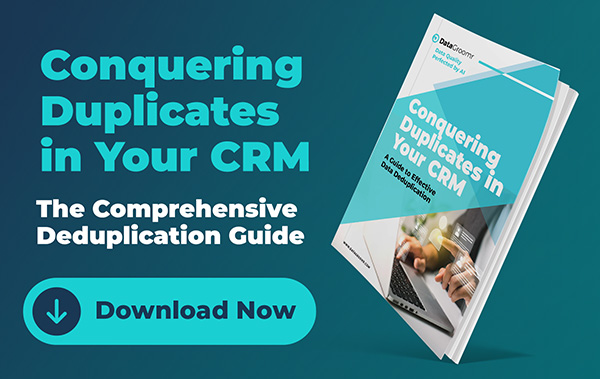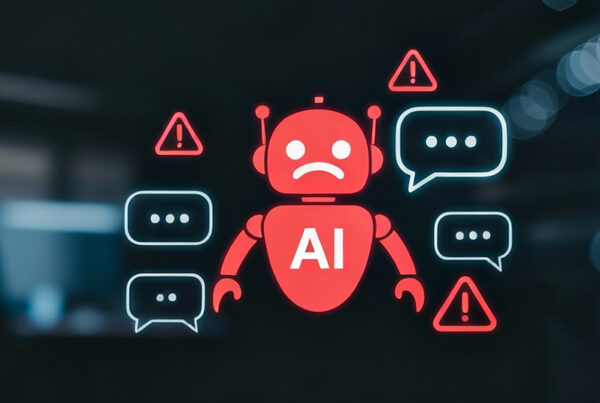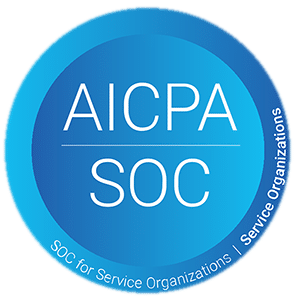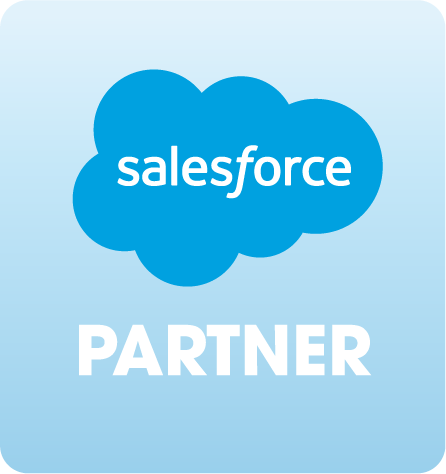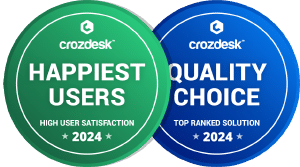
Salesforce has always been at the forefront in supporting corporate digital transformation. Much of the change – from the cloud-based CRM solution to the all-more-pervasive selling, servicing, marketing, e-commerce, and virtually everything in between offerings – is exegetically traceable to the dynamic business environment. In this Salesforce tutorial, we outline some of the future trends that you should not overlook to help drive business success. .
1. The Rise of Artificial Intelligence in Salesforce: Einstein and Beyond
Salesforce has adopted the use of Artificial Intelligence (AI) in its operations with the help of its star AI tool, Einstein. Salesforce Einstein is integrated within the platform to provide predictive, intelligent and cognitive services across the clouds of Salesforce.
- Predictive Analytics: Einstein allows for users to make predictions of consumers’ demands, the performance of sales, as well as the effectiveness of marketing strategies taken depending on historical data. This predictive capability enables organizations to make better decisions on the basis of available information with comparatively high probability of the decisions turning out right.
- Natural Language Processing (NLP): Einstein is capable of interpreting human language, which is used by businesses for responding to customers, sorting customer enquiries, and gaining insights from unstructured data such as emails and social media posts. This has been particularly explosive in customer relations where chatbots and virtual assistants now handle a significant portion of inquiries.
- Machine Learning: Einstein enables machine learning where the Einstein capability automatically refines suggested and forecast properties based on newly received data. Its self-improvement mechanism makes sure that insights within Salesforce are as relevant and as accurate as possible.
Salesforce’s embrace of AI, however, is not limited to Einstein. It is also combining with other AI technologies including the recently launched OpenAI GPT models. This integration makes it possible to improve the level of customer relations, targeting, recommendations, and efficiency of an organization.
2. The Expansion of Salesforce Customer 360
Salesforce Customer 360 is a powerful tool that gives businesses a unified view of all of their customers across all touchpoints. Since businesses are choosing to pursue omnichannel strategies to compete in today’s crowded playing field, they need to have a single source of truth for their customer data. This is where Salesforce Customer 360 comes in and connects data from all of tha various sources to create a complete customer profile.
- Unified Data Management: Customer 360 employs complex linking functions to assimilate information drawn from different sources into one account. This makes it possible to provide customized services to a large number of customers since one can look at the history of dealings, choice, and actions of a particular customer.
- Identity Resolution: A special module of Customer 360 is known as identity resolution, which matches clients across multiple systems. This ensures that data about the same customer, collected from various touchpoints, is correctly attributed to that customer’s profile. This capability is obligatory for companies that require individual approaches to clients formarketing strategies or customer services.
- Enhanced Customer Engagement: The combination of views of the customer gives a rotational look into the customer – hence better engagement of the business with their customers. For instance, the sales team can view everything the customer has ever bought, while the marketing team can map engagement across their marketing activities.
Customer 360 is not static and is being updated often with Salesforce releasing new tools and integrating with other platforms. This feature of the platform continues to trend with greater built-in analytics, real-time processing, and customizability; rendering the platform an essential element of modern CRM plans.
3. The Future of Work: Salesforce Anywhere and Remote Work Solutions
COVID-19 forced people to navigate the world of remote work, and Salesforce matched this movement with innovations. Salesforce Anywhere is a set of capabilities which were rolled out amid the COVID-19 outbreak to support remote work in the Salesforce environment.
- Real-Time Collaboration: Salesforce Anywhere can be connected with Salesforce’s main applications in order to display notifications, changes, and cooperative tools. Records can be worked on or commented on by the team, and all can keep abreast of current changes wherever the team is. This has been particularly useful for sales teams where coordination on partnership deals and interactions on customers are partly done remotely.
- Embedded Video and Chat: In order to address the need for communication within the concept of remote work, Salesforce Anywhere offers the capabilities of embedded video and chat. This also enables teams to have all their working discussions, planning and solving of problems through meetings and teleconferences within the Salesforce platform, hence linking all communications straight to records and activities.
- Mobile-First Approach: Salesforce Anywhere also fully understands and embraces the mobile-first principle, as remote work implies that employees need to be able to get information on their mobile devices to complete tasks. With mobile access available, users never lose the power of desktop functions and have consistent abilities, no matter where they work from.
These changes have not been limited to temporary trends where employees are forced to work remotely and then return to the office. These developments at Salesforce are in line with the company’s vision of the future of work and its provision of solutions that fit this concept.
4. Industry-Specific Solutions: Salesforce Industry Clouds
Considering that organizations of various industries confront different problems, Salesforce has specified its Industry Clouds. These clouds are customized to answer the requirements of certain industries including healthcare, financial operations, manufacturing, and retail.
- Healthcare Cloud:The Salesforce Health Cloud is designed to improve patient management and care coordination. It provides a 360-degree view of patients, enabling healthcare providers to deliver personalized care. It also has electronic health records (EHR) and other third-party Salesforce apps integration capabilities that enhance data exchange and patients’ experience.
- Financial Services Cloud: Financial Services Cloud contains tools for wealth management, retail banking, and insurance. It assists financial organizations in handling client relationships, complying with regulatory requirements, and improving operational efficiency by using automation.
- Manufacturing Cloud: Manufacturing Cloud offers tools for handling sales agreements, demand planning and supply chain management. Manufacturing customers canr link sales and operations to ensure production aligns with customer needs.
Salesforce Industry Clouds are always receiving new features and fresh connections depending on the needs of the industryto help solve particular problems more efficiently and effectively.

5. Hyperforce: The Next-Generation Infrastructure
Hyperforce is a state-of-the-art infrastructure that provides deeper integration of Salesforce applications with AWS, Google Cloud, and Microsoft Azure. These are some of the issues that have been brought into perspective through the Hyperforce model, which is quite different from the conventional ways of delivering Salesforce services:
- Global Reach: Thanks to Hyperforce, it became possible for Salesforce to offer its services closer to the customers , which would minimize the degree of latency. This is crucial for multinational companies that need to have access totheir CRM data from many different parts of the world.
- Scalability: Hyperforce enables Salesforce to build its infrastructure at a very fast rate as it supports the needs of its customers This scalability helps companies adapt Salesforce for further usage since they don’t have to worry about capacity or performance problems as they grow.
- Compliance and Security: Using public cloud providers, Hyperforce improves how Salesforce meets customers’ region-specific data regulation and security standards. Users can select where their data is headed in order to comply with company policies which adhere to laws such as the GDPR in Europe or the CCPA in California.
It is critical for Salesforce to intervene in thes \trends more dynamically to satisfyexternal customer needs and improve the management of data and infrastructure for internal customers.
6. Sustainability and Ethical Innovation: Salesforce’s Commitment to the Environment
As sustainability rapidly becomes a major business value, Salesforce is positionedas anethical innovation pioneer. Environmental stewardship is manifested by product elements, corporate policy, and advocacy.
- Sustainability Cloud: Sustainability Cloud is a part of Salesforce’s initiative to assist organizations in being sustainable and more specifically, in being environmentally responsible .Salesforce Sustainability Cloud is an application that enables the management and measurement of company environmental records. Organizations can use it to monitor their carbon footprint, CO2 output, and other emissions to track the organization’s \ sustainability objectives.
- Net Zero Cloud: Following the success of the Sustainability Cloud, Salesforce introduced Net Zero Cloud which manages the emissions of carbon to net zero. It offers functionalities for emissions reporting, planning an effective decrease in the number of emissions, and doing sustainability reporting for businesses to act on their environmental goals.
- Ethical Use of Technology: Salesforce is also very much driven by the appropriateness it takes in its technological solutions. SAP has its set of ethical rules when it comes to machine learning so that software tools, such as Einstein, do not promote prejudice. These initiatives are managed by Salesforce’s Office of Ethical and Humane Use of Technology to assure that its approaches to innovation are moral.
Salesforce’s concern with sustainability and ethical innovation highlights a change in the tech industry. Businesses are increasingly expected to consider the broader impact of their products and practices on society and the environment.
7. Low-Code and No-Code Platforms: Empowering Citizen Developers
Businesses require faster and easier application development tools, and hence there are low code and no code platforms available, including Salesforce Lightning Platform. These platforms enable ‘citizen developers’ – end-users who do not necessarily have knowledge in coding – to develop applications, design workflows, and even modify the CRM.
- Lightning App Builder: Lightning App Builder helps users create applications using components that are drag and drop. This powerful interface allows business users to create and deploy apps, thus lessening the need for IT department assistance and speeding up the development process.
- Process Automation: Flow Builder is an application from Salesforce that allows users to create complex business flows. Users can create workflows that trigger actions based on specific conditions, such as sending emails, updating records, or integrating with other systems.. This Salesforce automation capability enhances operations and thus organizational performance, mainly because it reduces redundancy.
- Integration with Third-Party Tools: Salesforce’s low-code platform also supports integration with third-party tools and APIs, allowing businesses to extend the functionality of their custom applications. A prime value of this capability is to offer organizations the development of solutions that are most suitable to meet their needs.
Low code as well as no code platforms are the true definition of ‘democratization of technology’, where business users are empowered to directly contribute to the solutions they require. The advancements made by Salesforce to this phenomenon are empowering organizations to introduce their products more effectively, cheaply, and with increased adaptability to unknown market conditions.
8. Blockchain and Salesforce: Trust and Transparency
Blockchain technology is known for its ability to create secure and transparent records, and has found its way into Salesforce’s ecosystem. Salesforce Blockchain, a user platform for organizations to set up networks, to create trusted distributed ledgers that can be integrated with Salesforce applications.
- Enhanced Trust: Businesses will be able to create records that are verifiable, which instills confidence in stakeholders. This is more so in operations such as services, supply chain and even the healthcare industry where customer loyalty is so important.
- Smart Contracts: Salesforce Blockchain supports the use of smart contracts, which are self-executing contracts with the terms of the agreement directly written into code. . These contracts also remove the need for third parties and are efficient because they do all the paperwork.
- Data Sharing: Data sharing enables secure transfer of information between different networks. Every network can be allowed to retrieve and work on common data and still be safeguarded against unauthorized access or cyber threats.
Salesforce’s foray into blockchain reflects the growing importance of trust and transparency in business operations.. Salesforce addresses this challenge with the integration of blockchain within the CRM platform tohelp businesses build reliable solutions.

9. Salesforce DevOps: The Case for CI/CD: Attaining Velocity to Innovation
As businesses require shorter innovation cycles, DevOps practices in Salesforce development have become vital. CI/CD practices embraced in DevOps for Salesforce imply constant integration and deployment of applications that are developed in Salesforce.
- Automated Testing: Salesforce DevOps tools help test custom applications and configurations at the DevOps level. This promotes great testing on changes before being released to production to minimize errors.Continuous Integration: Frequently, code changes are rolled out and tested in batches as they are produced. This enables developers to detect problems and fix them before later stages of development, increasing how fast new features and updates can be delivered.
- Continuous Deployment: Continuous deployment is the next level of CI that deploys change that has gone through testing to production environment on an ongoing basis. This makes it possible for businesses to release new features and updates often so they can meet the demands of the market within a short span of time.
Salesforce development is now brought about through DevOps practices, a move that is actually empowering businesses to innovate, decrease time to market and even enhance the reliability of their applications. With the constant tendency towards business process acceleration and further innovations, Salesforce DevOps will become more significant for organizations.
10. Generative AI: Outsourcing and the Turning Point of Customer Relations
Several aspects of generative AI technologies are amongthe most modern trends in Salesforce. With current models such as GPT (Generative Pre-trained Transformer), the company has started implementing generative AI into the Salesforce platform: to improve customer interaction, content generation and decision- making.
- Automated Content Creation: Generative AI enables Salesforce users to complement their work by generating relevant content like emails, social media posts, and customer responses. With the help of natural language generation (NLG), it is possible to create the right messages for every client and make conversations engaging. This is particularly helpful where you have a corporate marketing team which is tasked with the challenge of developing a lot of content for different customer segments.
- AI-Powered Sales and Service Assistance: The use of generative AI benefits sales and service teams by providing suggestions and automated responses to customers. For instance, sales representatives can receive suggestions regarding follow-up messages or proposals based on prior communication. Likewise, customer service agents may apply AI technology to provide efficient responses to customer inquiries and accurate information, which enhances satisfaction.
- Enhanced Personalization: It is even possible to create content within Salesforce that evolves based on behaviors of specific customers. For instance, it can create unique products depending on the customer, identify appropriate content for a web page,or adjust marketing messages instantly. This level of personalization contributes to improved customer relations and conversion rates.
Conclusion
Salesforce has embraced many trends and technologies and it is clear that the company is determined to be innovative in all of them. From artificial intelligence and machine learning to blockchain and dev ops, Salesforce is ever in the process of reinventing itself. Salesforce continues to provide solutions to help its customers manage change, create great experiences for customers and achieve sustainable growth.

